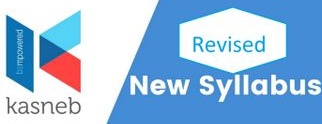1. Introduction to information communication technology (ICT)
1.1 Introduction to information communication technology
1.2 Computer hardware
1.3 Computer software
1.4 Programming languages and tools
1.5 Information systems personnel and hierarchy
1.6 Role of ICT in business environments
1.7 Information centres
1.8 Impact of ICT in business
2. Overview of operating systems
2.1 Overview of an operating system
2.2 Functions of an operating system
2.3 Types of operating systems
2.4 Computer booting
2.5 Selection and acquisition of operating systems
3. An overview of application packages
3.1 Word processing
2.5.1 Features of a word processor
2.5.2 Formatting and editing text
2.5.3 Creating and formatting tables
2.6 Spreadsheets 2.6.1 Features of a spreadsheet program
2.6.2 Formatting and editing spreadsheet
2.6.3 Formulas
2.6.4 Functions; sum, average, min, max, IPMT, NPV,PMT,PV, VLOOKUP, HLOOKUP, COUNT, IF, sumif
2.6.5 Charts and graphs
2.6.6 Working with pivot tables
2.6.7 Linking formulas in different worksheets
2.6.8 What if analysis; Goal seek and solver
2.7 Presentation software 2.7.1 Features of a presentation program
2.7.2 Typing and formatting text in slide
2.7.3 Slide show
2.8 Computerised accounting software 2.8.1 Capturing data
2.8.2 Features of accounting software
4. Computer networks
3.1 Computer networks concepts
3.2 Computer network hardware and software
3.3 Data transmission media
3.4 Types of computer networks
3.5 Advantages and limitations of networking
3.6 Cloud computing concepts, features and models
4.7 Internet of things (IoT)
5. The Internet
4.1 Introduction to the Internet
4.2 Applications of Internet
4.2.1 Using search engines
4.2.2 E-mails
5.2.3 Electronic communication
4.3 Internet services – e-mails, www, instant messaging
4.4 Internet service providers (ISPs)
4.5 Applications of internet
4.6 Online collaborative tools; cloud sheets and cloud documents
4.7 Impact of internet on society
6. Data security
5.1 Overview of data security
5.2 Threats and controls
6.3 Data backup and restoration procedures
7. Information systems in an enterprise
7.1 Overview of information systems
7.2 Components of an information system
7.3 Types and characteristics of information systems
7.4 Systems in a functional perspective
7.5 Enterprise applications and the business process integration
8. e-Commerce
8.1 e-commerce concepts and features
8.2 Models of e-commerce
8.3 Impact of the internet on business
8.4 E-commerce enabling software
8.5 Business opportunities in e-commerce
8.6 E-commerce infrastructure and platforms
8.7 E-commerce payments methods
8.8 Challenges of e-commerce
8.9 Securing e-commerce transactions
8.10 M-commerce and applications
8.11 Digital marketing methods
9. Mobile devices and applications
9.1 Overview of mobile computing
9.2 Types of mobile devices
9.3 Uses of mobile devices
9.4 Overview of mobile applications
9.5 Mobile browsers
10. Systems analysis and design
10.1 Elements of information systems
10.2 Systems theory
10.3 Types of information systems
10.4 Personnel involved in systems analysis and design
10.5 Systems analysis and design concepts
10.6 Systems development life cycle (SDLC)
10.6.1 Definition of systems development life cycle
10.6.2 Phases of SDLC
10.6.3 Advantages and disadvantages of SDLC
10.7 Requirements elicitation
10.7.1 Stakeholder analysis
10.7.2 Need for requirements gathering
10.7.3 Process for requirements gathering
10.7.4 Requirements gathering tools and techniques
10.7.5 Gap analysis
10.7.6 Prioritisation of requirements
11. Legal, ethical and social issues in information systems
11.1 Information systems ethical and social concerns
11.2 The moral dimension of information systems
11.3 The legal issues in information systems
